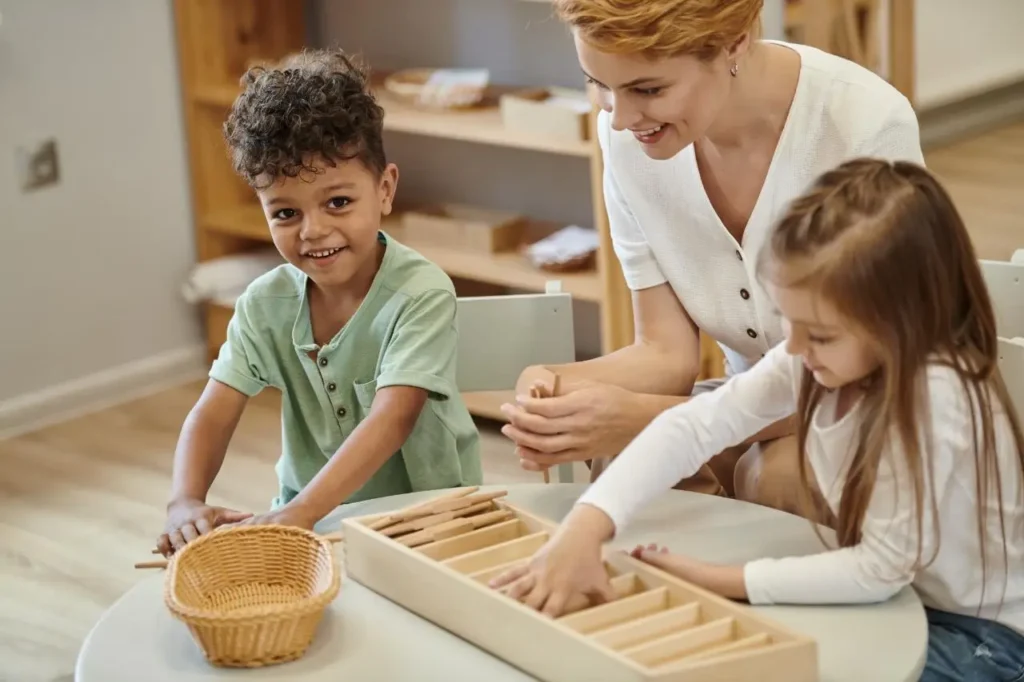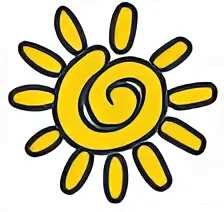Choosing the right educational approach for your child can be a daunting task.
Montessori and traditional education are two popular choices. But how do they compare?
This article will delve into the key differences and similarities between these two methods. We’ll explore aspects like classroom environment, teaching roles, curriculum structure, and child development.
Whether you’re a parent, an educator, or simply interested in early childhood education, this comparison will provide valuable insights.
Understanding Montessori Education
Montessori education is a child-centered approach. It was developed by Dr. Maria Montessori in the early 20th century.
This method emphasizes hands-on, self-directed learning. It encourages children to explore and learn at their own pace.
In Montessori classrooms, you’ll find mixed-age groups. This setup fosters peer learning and social development.
Defining Traditional Education
Traditional education, also known as conventional education, is the most common form of schooling. It’s based on a teacher-centered approach.
In this system, teachers deliver structured lessons to the whole class. They follow a set curriculum and use standardized tests to assess learning.
The focus is often on memorization and repetition. This method aims to equip students with a broad knowledge base.
Classroom Environment: Montessori vs. Traditional
Montessori classrooms are designed to foster independence. They are filled with hands-on materials that children can freely choose from.
In contrast, traditional classrooms are often arranged in rows facing the teacher. This setup supports the teacher-led instruction model.
The environment in each reflects the teaching philosophy: self-directed learning in Montessori, and teacher-led learning in traditional education.
The Teacher’s Role in Different Educational Approaches
In Montessori education, the teacher acts as a guide. They observe and facilitate learning, allowing children to explore at their own pace.
Traditional education, on the other hand, positions the teacher as the primary source of knowledge. They direct the learning process and control the pace of instruction.
These differing roles reflect the contrasting philosophies of child-led versus teacher-led learning.
Curriculum Structure and Flexibility
Montessori education offers a flexible curriculum. It adapts to each child’s individual learning pace and interests. This approach encourages exploration and discovery.
In contrast, traditional education follows a fixed curriculum. It’s often tied to standardized testing and benchmarks. This structure can limit flexibility and individualization.
These differences highlight the contrast between child-centered and system-centered approaches to education.
Hands-On Learning and Sensorial Activities
Hands-on learning is a cornerstone of Montessori education. Children learn through direct interaction with materials. This approach makes abstract concepts more concrete.
Traditional education often relies on memorization and repetition. It’s less focused on experiential learning.
Sensorial activities are unique to Montessori. They help children understand the world through their senses.
Child Development and Independence
Montessori education fosters independence. Children are encouraged to learn at their own pace. This approach respects individual development.
In traditional education, learning is often paced by the curriculum. This can limit a child’s independence.
Both systems aim to support child development. However, their methods and philosophies differ significantly.
Assessment and Progress in Montessori and Traditional Settings
Montessori education uses observation for assessment. This method focuses on individual progress.
Traditional education often relies on grades. This can create a competitive environment.
Conclusion: Choosing the Right Fit for Your Child
Choosing between Montessori and traditional education is a personal decision. It depends on your child’s needs and your family values.
Both systems have their strengths. They also have unique approaches to learning.
In the end, the best choice is the one that suits your child’s learning style and pace.


